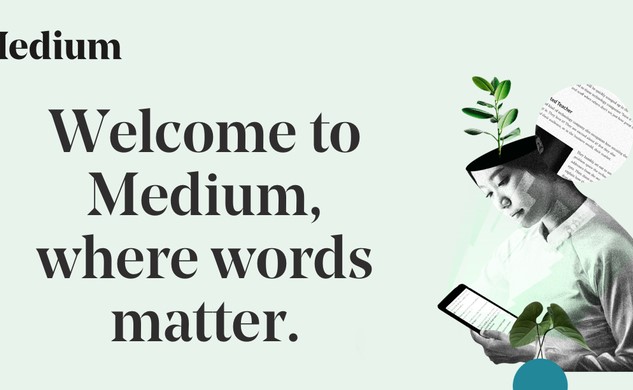Medium has grown to be a central hub for readers and writers who want to dive deep into a wide array of topics ranging from technology and entrepreneurship to personal development and creativity. Known for its high-quality content, the platform attracts millions of users globally, who come to consume articles written by both amateur bloggers and professional journalists. However, not all of this content is freely accessible; Medium employs a paywall to monetize its extensive library of articles.
A paywall, for those unfamiliar, is a method of restricting access to content via a purchase or paid subscription. On Medium, readers are allowed to read a few articles for free each month, after which they must subscribe to continue enjoying the content. This subscription model is essential for supporting the writers and the platform itself, ensuring that contributors are compensated for their efforts.
Despite the justifications for its existence, some users seek ways to bypass Medium’s paywall. This could be due to a variety of reasons—perhaps they can’t afford the subscription, or they only want to read a specific article without committing to a full subscription. However, it’s crucial to address this issue thoughtfully. This article aims to explore how to access Medium articles without directly paying the paywall, focusing on methods that are both ethical and legal. By choosing legitimate alternatives, users can respect the platform’s business model and the hard work of its writers, ensuring that creative content can thrive in a fair ecosystem.
Understanding the Medium Paywall
Medium’s paywall is a strategic implementation designed to balance free access to content with a sustainable business model. This paywall is part of Medium’s Member subscription service, which was introduced to create a revenue stream that supports both the platform and its content creators. Here’s how it operates: readers are given free access to a limited number of articles each month. Once this limit is reached, they must subscribe for a monthly fee to unlock unlimited access to all articles on the platform.
The rationale behind implementing a paywall is straightforward yet vital for the platform’s longevity. It ensures that writers are compensated for their work based on reader engagement and subscription revenue, rather than solely relying on advertising. This model aims to cultivate a high-quality, ad-free reading environment that prioritizes user experience and content value. It also encourages writers to produce compelling, thoughtful content that can drive subscriptions and retain reader interest.
Statistically, the impact of the paywall is significant. While specific numbers fluctuate, it’s known that Medium has millions of users, with a substantial portion opting to subscribe to bypass the paywall and access the full breadth of available content. As of the last available data, Medium boasted over 60 million unique monthly visitors, and while the company does not publicly disclose the exact number of paying subscribers, estimates suggest a healthy conversion rate from free to paid users. This transition from free access to paid subscriptions indicates a solid approval of the content quality and the value users see in investing in the platform.
Legal and Ethical Considerations
Bypassing paywalls can tread into murky legal and ethical waters. It’s essential to understand the ramifications of such actions, not just from a legal standpoint but also considering the broader impact on the content ecosystem.
Legal Implications of Bypassing Paywalls
Legally, bypassing a paywall can violate terms of service agreements that users accept when signing up for websites like Medium. In some jurisdictions, circumventing access controls to consume content without paying could be seen as breaching digital rights management laws. Although prosecutions for such actions are rare, they are not entirely out of the question. More commonly, users found bypassing paywalls may face bans or restricted access from the platform itself as a more immediate consequence.
Ethical Considerations and the Impact on Content Creators
Ethically, bypassing a paywall raises significant concerns. Writers and journalists rely on the revenue generated from subscriptions to earn a livelihood. When users bypass paywalls, they undermine the platform’s ability to support its creators, potentially leading to a decrease in the quality and quantity of available content. This behavior can erode the ecosystem where creators are fairly compensated for their work, ultimately affecting the entire community of readers and writers.
Insights from Industry Experts
Several industry experts have weighed in on the morality of paywall bypass. For instance, a media studies professor might argue, “While the digital age has made content readily accessible, it’s crucial to remember that behind every article is a writer whose livelihood depends on the revenue generated from readers who value their work. Ethical consumption is key to sustaining a vibrant, informative media landscape.”
Similarly, a legal expert in digital media rights could state, “Users must understand that the legal frameworks surrounding digital content access are there to protect both the creators and consumers. Respecting these laws ensures a fair environment for all stakeholders involved.”
Legitimate Ways to Access Medium Content Without Direct Payment
For those eager to explore the rich content available on Medium but hesitant about immediately subscribing, there are several legitimate avenues to access articles without direct payment. These methods ensure you stay within the legal boundaries and ethical considerations discussed previously.
Medium’s Free Access Options
Medium offers each new visitor a certain number of free articles to read each month without a subscription. This model is designed to give potential subscribers a taste of the platform’s offerings, allowing them to read a variety of articles before hitting the paywall. Furthermore, Medium authors can share a “friend link” to their articles, which provides access to the content outside the paywall. These friend links do not count against the free article limit, allowing unrestricted access to specific articles if obtained directly from the author.
Partnerships and Promotions
Medium frequently engages in partnerships with other companies and services that can include ways to obtain free or discounted Medium memberships. For example, members of certain educational programs or subscribers to specific services might receive promotions offering a limited-time free or discounted Medium subscription. Keeping an eye on Medium’s announcements or subscribing to newsletters from partner companies can be a great way to catch these opportunities.
Public Libraries and Institutional Access
Many public libraries and educational institutions offer their members free access to various databases and subscription services, including Medium. By using library or university provided digital resources, individuals can access Medium content at no additional cost. This method supports public and educational mandates to provide free access to information, while also respecting the platform’s subscription model. Checking with your local library or educational institution’s resource access policies can reveal whether Medium is included in their digital offerings.
Tech-Savvy Alternatives: RSS Feeds and Aggregators
For those who are comfortable with technology, RSS feeds and aggregators present a savvy way to access content summaries from platforms like Medium. This method can be particularly useful for keeping up with new posts from favorite writers or topics without directly navigating the paywall.
Understanding RSS Feeds
RSS, which stands for Really Simple Syndication, is a type of web feed that allows users and applications to access updates to online content in a standardized, computer-readable format. These feeds can provide summaries or entire articles, depending on the publisher’s settings. For Medium, RSS feeds generally offer a summary or a preview of the articles, which can help you decide if a particular piece is worth pursuing further, potentially through a subscription.
Popular RSS Aggregators That Include Medium Posts
Several RSS aggregators can be used to subscribe to Medium RSS feeds, allowing you to consolidate updates from various sources into a single, convenient location. Some popular RSS aggregators include:
- Feedly: Highly customizable, Feedly allows you to add RSS feeds from a wide variety of sources, including Medium. It’s particularly popular for its user-friendly interface and organizational features.
- Inoreader: Similar to Feedly, Inoreader also offers a powerful search tool to find feeds related to specific topics or keywords, which makes it easy to follow Medium content based on your interests.
- The Old Reader: Perfect for personal use, The Old Reader provides a simple, straightforward way to manage RSS feeds, including those from Medium.
Step-by-Step Guide on Setting Up an RSS Feed for Medium Content
To set up an RSS feed for Medium content, follow these simple steps:
- Choose an RSS Aggregator: First, select an RSS reader like Feedly, Inoreader, or The Old Reader. Create an account if you don’t already have one.
- Locate the Medium RSS Feed URL: You can typically find the RSS feed for a Medium publication or individual profile by adding “/feed/” before the publication’s name in the URL. For example, if the publication’s URL is
https://medium.com/example-publication, the RSS feed URL would behttps://medium.com/feed/example-publication. - Add the RSS Feed to Your Aggregator: Copy the RSS feed URL and go to your chosen RSS aggregator. There should be an option to “Add Content” or “Subscribe.” Paste the URL into the designated field and follow the prompts to subscribe.
- Organize and Customize Your Feeds: Most aggregators allow you to organize your feeds into categories or lists. Customize your settings to optimize how you receive and read updates.
Exploring Browser Extensions and Third-Party Tools
Browser extensions and third-party tools can significantly enhance your reading experience on various platforms, including Medium. These tools can manage how content is displayed, track your reading habits, and even interact with paywalls. It’s important, however, to approach their usage with awareness of both their functionality and the legal implications.
Overview of Browser Extensions Designed to Enhance Reading Experiences and Manage Paywalls
There are several browser extensions that can enhance your reading experience by adjusting the layout, removing distractions, or managing how paywalls affect your access. Extensions like:
- Reader Mode: This type of extension declutters web pages, stripping out unnecessary ads and sidebar content to present you with a clean, readable version of the article.
- Unpaywall: This legal tool helps you find openly accessible versions of paywalled articles, often provided by the authors themselves on platforms like institutional repositories or their personal websites.
Legal Disclaimer About the Use of Third-Party Tools
While using browser extensions like Reader Mode is generally legal and ethical, other tools that explicitly bypass paywalls can venture into legally questionable areas. It’s crucial to use extensions that respect the content creator’s rights and adhere to legal standards. Extensions that scrape content or bypass paywalls without authorization might violate terms of service and copyright laws. Always ensure that any tool or extension complies with both the law and the ethical standards discussed earlier.
Pros and Cons of Popular Browser Extensions
- Pros of Reader Modes and Accessibility Extensions:
- Enhanced Focus: By removing ads and sidebars, these extensions help you focus solely on the content, making for a better reading experience.
- Customization: Many of these extensions allow you to customize the appearance of content according to your preferences, such as text size and background color.
- Cons of Reader Modes and Accessibility Extensions:
- Limited Interaction with Site Features: Sometimes, these extensions can strip away features like commenting or interactive media, which are part of the site’s engagement tools.
- Dependency: Overreliance on these tools can sometimes hinder your experience on websites that are already optimized for readability.
- Pros of Legal Paywall Management Tools like Unpaywall:
- Ethical Access: These tools provide access to free, legal versions of articles, supporting open access initiatives and ethical consumption of digital content.
- Wide Availability: They connect you to a broad network of institutional and personal repositories.
- Cons of Legal Paywall Management Tools like Unpaywall:
- Limited Coverage: Not all articles will have a freely available version, so the tool’s effectiveness can be inconsistent.
- Misunderstandings of Source Validity: Users might confuse legally available free versions with less reliable sources if not familiar with the differences in content sourcing.
Using these tools responsibly can significantly enhance your online reading experience, provided their usage remains within the legal and ethical frameworks established by content providers. Always prioritize supporting content creators and platforms by using legal and ethical methods to access
Community and Sharing Economy Solutions
In the digital age, community and sharing economy models provide innovative ways to access and share content legally and ethically. Platforms like Medium are not just individual experiences but can be enhanced through communal interactions and shared resources. Here’s how these approaches can help in accessing Medium content without directly bypassing the paywall.
Joining Medium Reading Groups for Shared Access
Medium reading groups, often formed within social media platforms or through direct Medium interactions, can provide a communal way to access content. These groups are typically composed of Medium subscribers who share links to full articles accessible through the platform’s policy of allowing the sharing of ‘friend links.’ These links, shared within the group, give members free access to otherwise paywalled content without infringing on Medium’s terms of service.
- Benefits: Joining such groups can enhance your understanding and appreciation of content through discussions and shared insights.
- Considerations: Always ensure that the group operates in compliance with Medium’s policies, focusing on legal sharing methods.
Legal Sharing of Articles Through Social Media or Email
Medium allows its users to share what they’re reading through social media or email via friend links. These links provide free access to an article, regardless of whether the recipient has hit their free monthly article limit. This method is encouraged by Medium as it drives engagement and potential new subscriptions.
- How it Works: If you’re a subscriber, you can share a friend link directly from the article page. Non-subscribers receiving the link can read the article in full, often leading them to explore more content on Medium.
- Ethical Considerations: While sharing friend links is allowed, it should be done thoughtfully, respecting the author’s and platform’s intentions of fair use and distribution.
The Role of Online Communities in Democratizing Access to Paid Content
Online communities play a crucial role in democratizing access to information. By forming networks that share interests and resources, users can access a wider range of content while supporting the ecosystems that create this content.
- Community Efforts: Many online forums and groups discuss articles, summarize their contents, and encourage dialogue around topics featured on Medium.
- Impact on Content Access: These discussions can provide sufficient insights that might negate the need to bypass a paywall, providing value through community knowledge and engagement.
Conclusion
Throughout this exploration into navigating Medium’s paywall, we’ve underscored the crucial balance between accessing content affordably and supporting the creators who enrich the platform with their diverse insights and stories. The vitality of platforms like Medium relies heavily on the symbiotic relationship between readers and writers, where each supports the other to foster a thriving ecosystem of ideas and information.
Supporting Content Creators and Ethical Access
Content creators form the backbone of platforms like Medium, dedicating their time and talents to sharing valuable knowledge and narratives. By choosing methods that respect their contributions—such as utilizing free articles, subscribing, or participating in community sharing with friend links—we ensure these creators are compensated and acknowledged for their efforts. This, in turn, encourages the production of more high-quality content, benefiting all users of the platform.
Encouragement to Choose Legal and Ethical Methods
It’s imperative to approach the desire to bypass paywalls with a mindset that values legal and ethical considerations. As we’ve discussed, there are numerous legitimate ways to access Medium content without infringing on copyrights or violating terms of service. Whether through the use of RSS feeds, browser extensions that promote open access, or participating in shared community resources, each method offers a way to enrich your reading experience without compromising on legality or morality.
Call to Action: Explore Solutions and Respect Policies
As readers and engaged digital citizens, you are encouraged to explore the solutions outlined in this discussion. Take advantage of RSS feeds to keep up with your favorite publications, join reading groups to share and receive content, and consider legal browser extensions to enhance your reading without bypassing paywalls unethically. Most importantly, always respect the policies set by platforms like Medium. These guidelines are not just rules but commitments to maintaining a fair and sustainable environment for all users—readers and writers alike.
FAQs
1. What is the Medium paywall? The Medium paywall is a subscription-based model that limits free access to articles. Readers can view a few articles for free each month, after which they must subscribe to read more. This model supports content creators by ensuring they are compensated for their work.
2. Why do some users seek to bypass the Medium paywall? Some users seek to bypass the Medium paywall due to the cost of subscription or the desire to access specific articles without committing to a full subscription. However, it’s important to consider legal and ethical methods to access these articles.
3. Is it legal to bypass the Medium paywall? Bypassing the Medium paywall through unauthorized means can violate copyright laws and terms of service. Users should focus on legal alternatives like utilizing free access options provided by Medium or using public library resources.
4. Are there ethical concerns with bypassing the Medium paywall? Yes, bypassing the paywall without consideration can harm content creators who rely on subscription revenues. Ethically, users should support creators by using legitimate methods to access content.
5. What are some legal ways to access Medium articles without paying? Legal ways to access Medium articles include taking advantage of Medium’s own free articles per month, using friend links shared by authors, or accessing Medium through institutional subscriptions provided by schools or libraries.
6. Can I use RSS feeds to bypass the Medium paywall? RSS feeds can be used to access content summaries from Medium without directly bypassing the paywall. This is a legal and ethical way to stay updated with new content without accessing full articles.
7. Are there browser extensions that can help bypass the Medium paywall legally? Browser extensions like Unpaywall can help users find legally available, free versions of articles. These tools link to content legally made available by authors or publishers and do not breach the paywall directly.
8. How can joining Medium reading groups help in accessing more content? Joining Medium reading groups can allow users to share and receive friend links, which provide free access to articles. This community-based approach is a legal way to enjoy more content without individual subscriptions.
9. Can sharing articles via social media be considered bypassing the paywall? Sharing articles via social media using the friend links provided by Medium is encouraged by the platform and is not considered bypassing the paywall. It’s a legal method that helps disseminate content while respecting the platform’s policies.
10. What should I consider before trying to bypass the Medium paywall? Before attempting to bypass the Medium paywall, consider the impact on content creators and the legality of your methods. Ethical and legal approaches not only respect the law but also support the creators and the sustainability of the platform.







